| Landscape designer Le Nôtre organized a vast unbuilt area of more than 250 acres into a logical area with parterres, vistas, waterways, and hidden surprises and diversions. He contrasted natural landscape with formal artifice. The formal gardens with geometric beds, topiary, and clipped hedges were inherited from Italian Renaissance gardens. Although this can be defined as classical landscape practice, the huge size and vast stretches of lawn seem Baroque in its excess and theatricality. The most formal areas are closest to the palace and provided settings for elaborate outdoor fêtes including plays, ballets, operas, fireworks, and torchlight banquets. Near to the Palace of Versailles, Le Nôtre designed a main axis together with parterres arranged in a regular plan. Farther from the palace, the garden opens into a wider landscape and at the beginning of the Grand Canal, he designed a secondary axis at right angles to the main one. Farther from the palace, he designed allées and picturesque vistas. This huge project--the redesigning of nature, the importation of huge quantities of water illustrates the Absolutist domination of Nature. Just as Apollo the sun god controlled the light in the sky, his earthly incarnation Louis XIV attempted to control Nature in this vast domain.
|
Leto Basin, or Bassin de Latone, looking toward the Grand Canal |
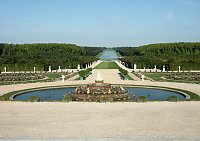
|

|
This stepped fountain, with Leto/Latona at the summit, has both bronze frogs and lizards and human figures with frogs' heads or legs. According to the myth, Apollo, angry with those who mocked at his mother Leto, turned them into frogs and lizards. |
| |
|
| More than 70 sculptors were employed to design statues and fountains for this enormous landscape plan. |

|
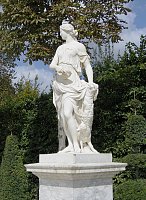
|
| |
|
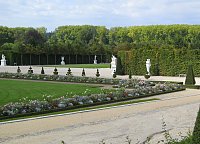
|
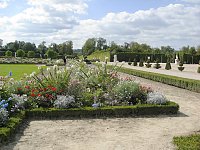
|

|
| |
|
The Dragon Fountain |

|
| |
|
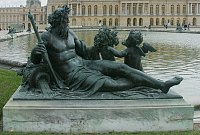
|

|
Left: The River Seine;
center: The River Loire |
| |
|
Center: another personified river?;
right: sculptured vase on the terraceThere are two of these--one La Guerre, the other La Paix. |
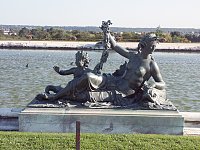
|
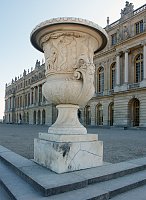
|


 Go to Versailles Index.
Go to Versailles Index. Click here to return to index of art historical sites.
Click here to return to index of art historical sites.
 Click here to return to index of artists and architects.
Click here to return to index of artists and architects.
 Click here to return to chronological index.
Click here to return to chronological index.
 Click here to see the home page of Bluffton University.
Click here to see the home page of Bluffton University.

